Custom Wood Countertops Made in Maryland
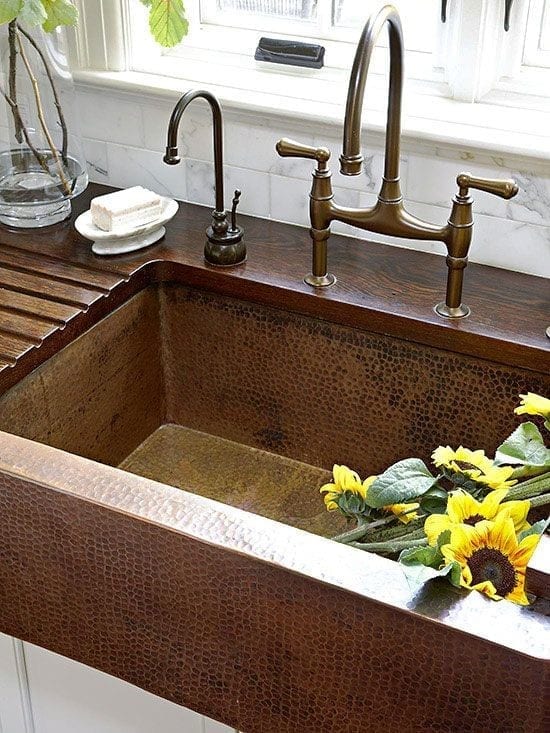
Made in the USA!
Combining the latest wood working technology and the highest quality hardwoods in the hands of talented craftsmen we’re proud to offer a fine American made product. Our custom wood countertops are available for installation in Frederick, Maryland, and the surrounding areas. A large portion of our offering is grown, harvested, milled and fabricated locally. This “locally grown” effort is environmentally friendly and keeps our impact on the environment at a minimum. By controlling wood at the source and having mill relationships we can drastically cut the lead times.
Designing Custom Wood Countertops
We’re going to simplify this process of selection by breaking it down into sections. There are many options to pick from when it comes to wood countertops. Wood species, thickness, construction styles, edge profiles, finish, textures, support issues etc… Below were going to walk through these subjects and hopefully you’ll find the options and answers needed. If you don’t something your customers are requesting please send us your request and we’ll see what we can do to accommodate them.
Construction Options
At DSU we use random board width and a 1-1/2” thickness as our default and it’s what we base our pricing on unless otherwise instructed by our clients. This method is random and the board width is unplanned. This means the board in the front of the top may be a different width than the board in the middle or the piece in the back. We choose this method since it waste less material making the best use of our precious recourses. The board width can vary from 2” to 8” in width which creates a more dramatic grain presentation by showing larger sections.
Other methods are available and prices will vary accordingly. These include uniform board width. This is where every board is the same width and you decide how wide you want each board. Edge grain, is where the boards lay on their side. It makes the grain lines closer together and creates a completely different look. Breadboard ends, distressing, rough cut, aged wood, and antique or reclaimed wood are among the available selections. DSU can accommodate different dimensions upon request; some thicker tops may require laminating the edges. One great feature about custom wood tops is having the flexibility to produce the custom look and sizes our customer’s desire.
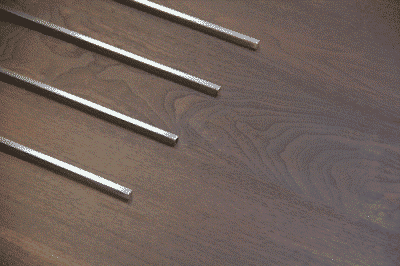
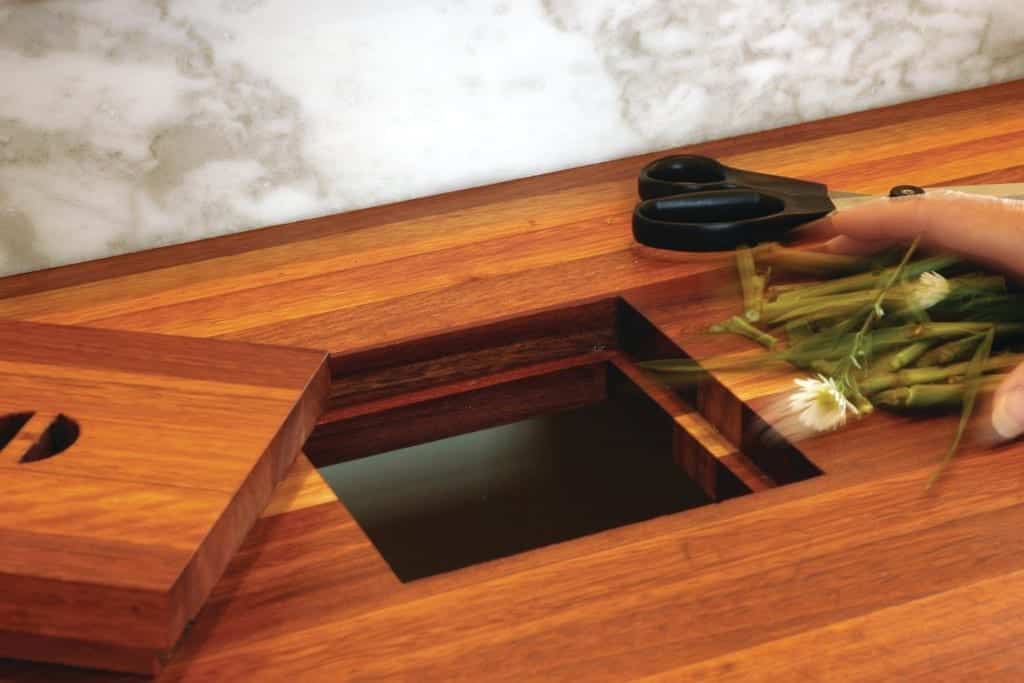
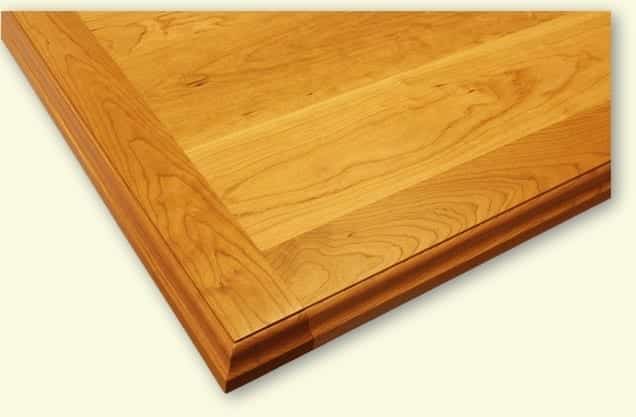
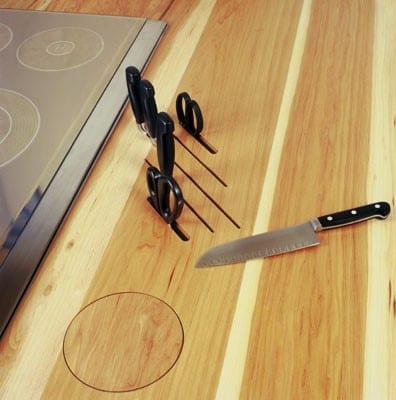
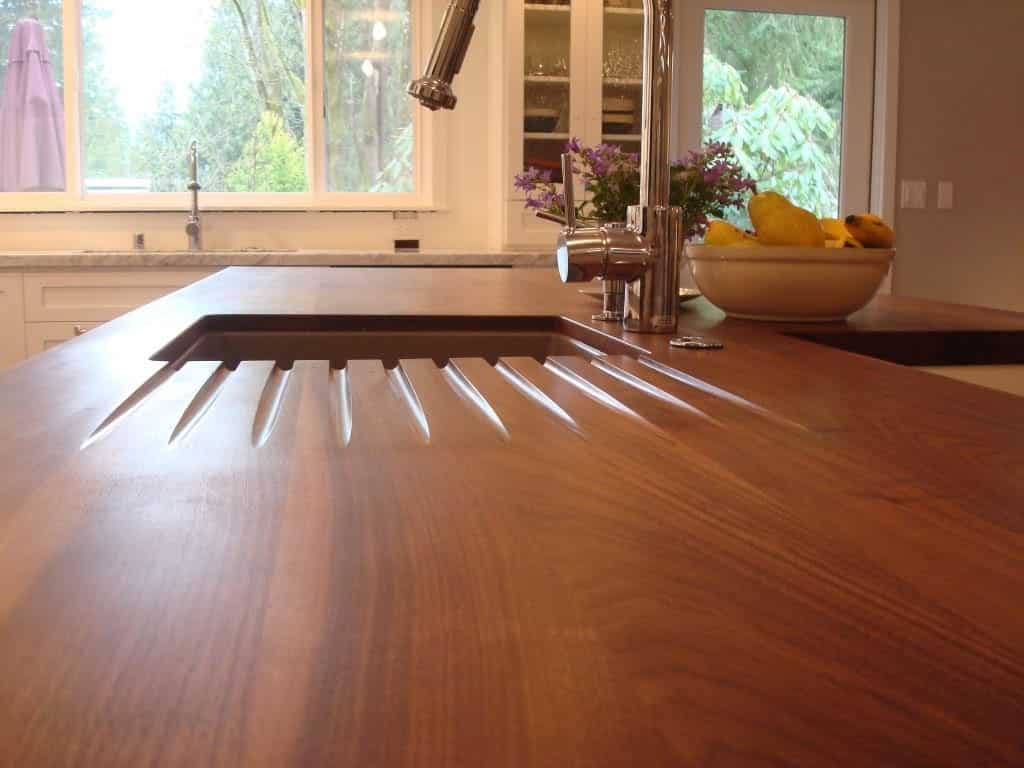
These pictures show the difference between edge grain and plank grain. The grain structure is much tighter with edge grain. This technique also creates more glue line since the boards are much wider than they are thick.
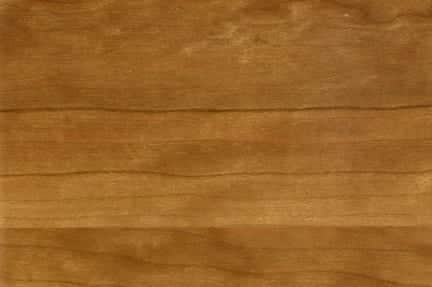
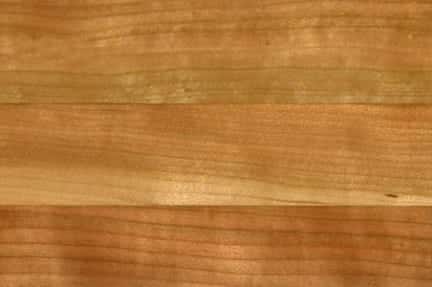
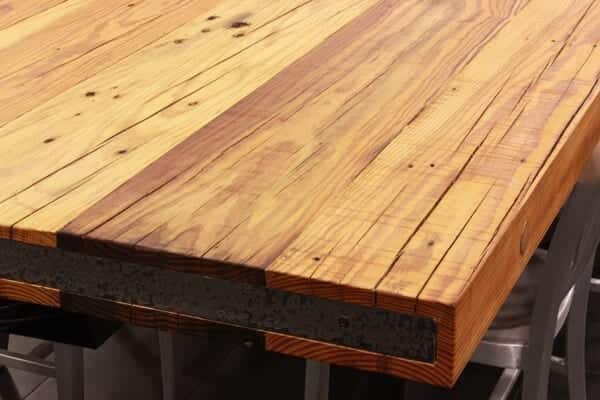
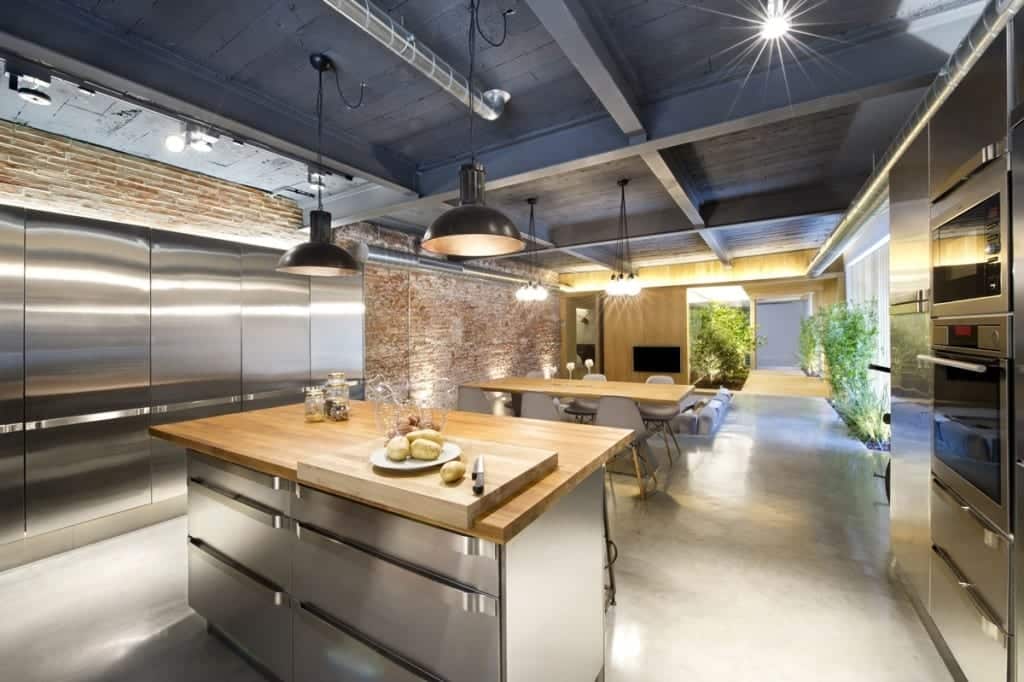
Do you have a project that has a lot of square footage? Would you like your kitchen island to look 3″-4″ thick without the cost of a thicker slab of wood? A built up edge may be ideal for you. The tops below are shown from the bottom to illustrate how the edges are applied. This method only applies to plank-style pieces and the glue joints will be slightly visible. We reduce this slightly by turning the grain on the ends of the top to match the grain of the boards on the surface. Below are two examples of how the build-up is applied. Both views are showing the bottom of the countertops
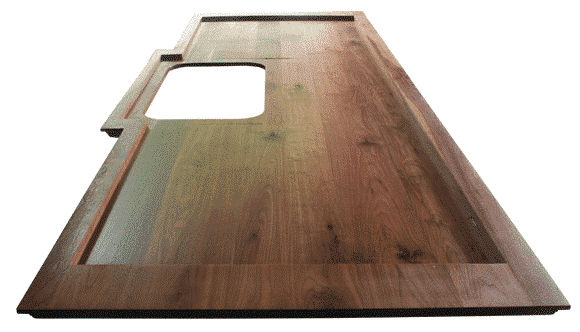
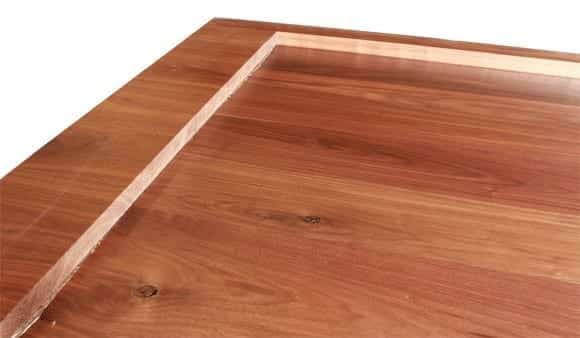
Wood Species Selection
We have a basic selection of wood countertops that we sample which includes teak, African mahogany, cherry, hickory, hard maple, red oak, white oak and walnut. We would be happy to fill request for more custom or exotic options. Perhaps some reclaimed chestnut or some antique heart pine, maybe some quarter sawn white oak or birds eye maple. What if a distressed look is in the design? No problem, we offer locally sourced fabrication of any wood. Have your own unique wood? No problem there either, we will work to accommodate any wood countertop project you have.
Remember when selecting a wood countertop from a sample it is important to understand that a 4”x5” sample represents a small piece of a single tree. There is also the issue of oxidization, the darkening of wood from exposure to oxygen and UV light. Environmental influences along with natural variation in wood grain affect the color differences found between samples vs. the finished products. Some species have a random grain variation and white or off-colored areas . This is common to species like but not limited to cherry, hickory and sepele.
The bottom line is a wood customer needs to be open to color variation when deciding on a species. Wood’s variation is one of its most interesting characteristics, but it can also be frustrating if you don’t plan for it.

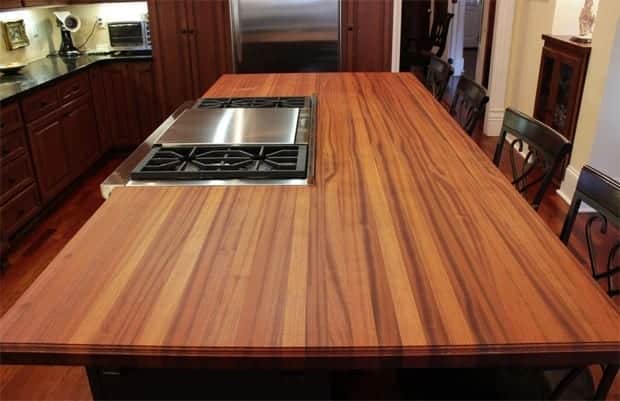
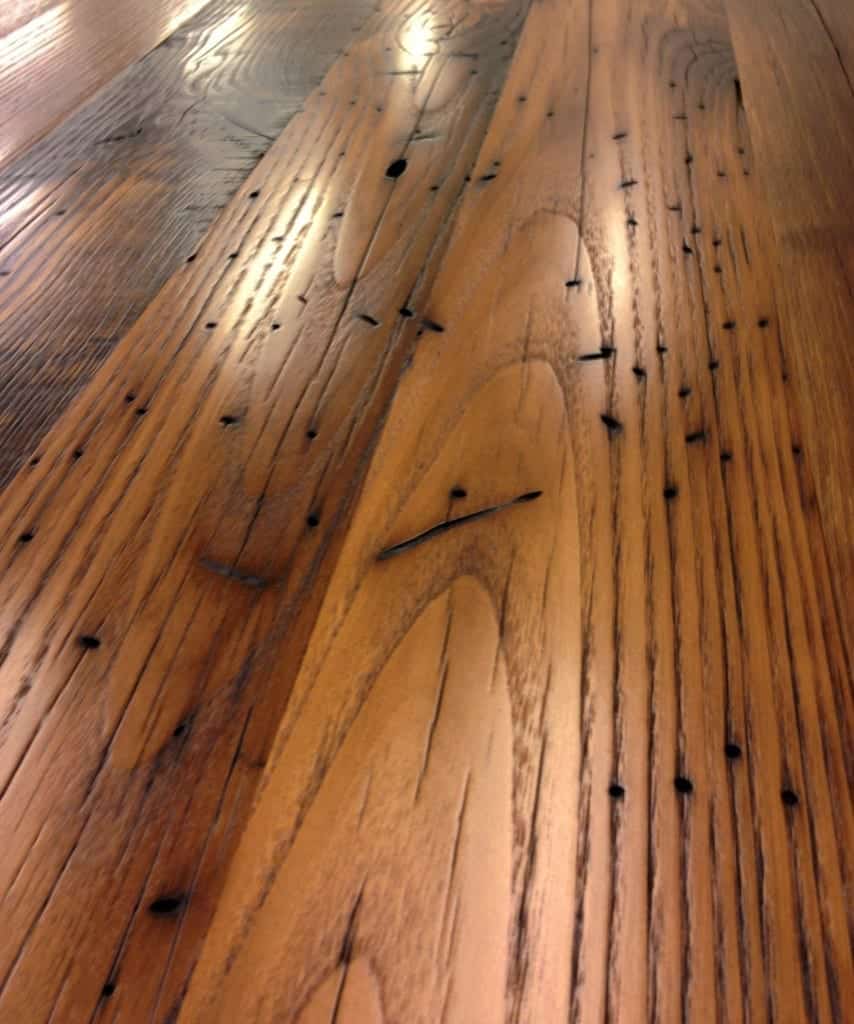
Sealer/Finishes
There are three finish options available for our wood countertops. They all do a great job of sealing the wood but in very different ways and each have a distinct look and feel. The three sealers we offer are food grade mineral oil, butchers wax and Tung oil.
The first step in choosing a finish is to decide what you want to do with your countertop. Is it going to be an area to chop on or a standard counter surface with some lite food prep but nothing involving a meat cleaver? Are you going to want a sink in the top? If you want to chop directly on the surface of a wood countertop then you’re going to want to use a mineral oil finish or butcher block wax. These types of finishes offer very little in the way of protection from stains. They are designed to feed the wood keeping it from drying out and cracking.
The butcher block wax offers the more protection as it has paraffin wax in the mix and will repel some liquids for a short amount of time. Countertops without sinks will need re-oiled/waxed once every other month. On the other hand, tops with sinks should be re-oiled/waxed at least once a month. We recommend using Howard Brand Butchers Wax because it’s easy to apply and smells great.
Countertops that will not be used as chopping surfaces or may have an under-mount sink installed can use Tung oil. The Tung oil has resins in it, as the oil soaks into the wood it takes the resins with it deep into the wood fibers. Unlike mineral oil Tung-oil dries and the resins harden providing a water and stain resistant seal. Typical characteristics of this type of sealer are a saturated color of the wood and a low sheen.
Maintenance on a top sealed with Tung-oil would include re-application once or twice a year as needed. In addition, it requires frequent cleaning with a mixture of one part vinegar and three parts water. This is also a great cleaner for the food safe oils. One note to make here is that Tung-oil is not bullet proof. It will afford a little more time to clean up from food preparation since it seals the wood fibers better than mineral oil. Water rings from glasses can occur from time to time but because the finish is so easy to repair simply wipe on another quick coat, we’ve never found it to be an issue.
Tung oil is made from the seeds of the Tung tree which may cause an allergic reaction in rare cases. You must inform us prior to applying this finish if you think you may have a seed allergy.
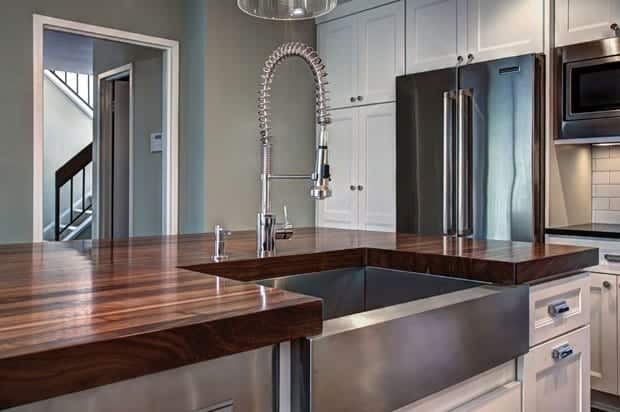
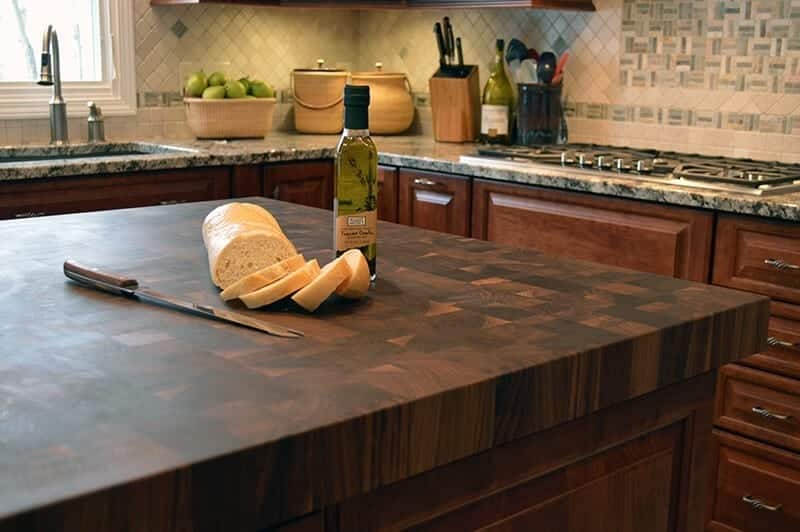
Support
Wood countertops are growing in popularity. They offer durability, beauty and function but they do require a slightly different approach to support than stone and other solid surfaces. Being an organic material, solid hardwood reacts to changes in temperature and humidity. Wood is most comfortable in about the same environment we prefer. A relatively constant temperature and a humidity level of around 45 to 55 percent are great for people and their wood countertops.
With this information in hand we need to do some planning for the support of wood countertops before we’re ready to install. Commons sense indicates that the top needs to be prevented from sagging downward. The less obvious issue is that the corners may be inclined to lift up if the top isn’t secured in some way to maintain vertical stability.
We can accomplish this in a couple of ways. The most obvious is to provide a solid form of support, a cabinet box or wall cleat under all four corners of the countertop. Lightweight legs aren’t really sufficient here and most decorative corbels are just that, decorative. Although the upward motion is fractions of an inch, it is powerful and needs effective counter methods. And what about the island tops with overhanging portions for seating? Is there any way to maintain a level countertop without compromising the look of the project?
Of course, it’s just a matter of some advance planning. We advise using ¾” square tube steel applied into routed pockets on the underside of the countertop. The ¾” square tube is a hollow square steel bar with four sides. This is much stronger and less flexible than a simple steel strap or rod. A wood thickness of at least 1.5” is required to use this method of support. Because the steel is flush with the lower side of the countertop it isn’t visible unless you are actually under the level of the counter.
The cost of installing steel support is minimal and allows the homeowner the assurance that the wood countertop is going to stable and strong with or without any other form of support. With the steel in place, design preference can drive the choice of legs or corbels. Wood tops can span an opening of 36” without support and can overhang 6 “or less without the use of steel bars or corbels.
Wood Countertops Care and Maintenance
A myth has been around for years that wood cutting surfaces, often called butcher block, harbor bacteria. Research has proven that the wood itself is actually anti-bacterial and superior to the plastics used for cutting boards. Both get “scarred,” from use, but the wood allows the bacteria to move deeper into the fiber. There, naturally occurring substances get rid of it.
When using wood as a cutting surface, you will need a mineral oil mixture finishing rather than a butchers wax or Tung oil finish. Keeping it clean and conditioned is easy and pays off in both the sanitary factor and the look of the piece.
Wiping the area clean with a damp cloth each time it’s used will help discourage juices and oils from penetrating the wood. Some people use a mild soap solution on their wood cutting surfaces and there are those who apply a very diluted chlorine bleach now and then. These cleaners do the job but can cause the wood to dry out more than it should. We recommend using the natural approach to cleaning your wood. Wipe the surface each time you use it and don’t allow liquids to remain on it longer than necessary. Using more water in the cleaning doesn’t make a cleaner surface as it may with other material. Just dampen the cloth and don’t soak the wood.
For a serious cleaning after wiping the area with a damp cloth simply use a cut lemon to scour the surface with coarse salt. The combination takes out stains, brightens the color and eliminates bacteria. Then back to the damp cloth to wipe away the residue. For everyday disinfecting use a mixture of 1 part white vinegar to 3 parts water. You can use a spray bottle for quick and easy application.
The next step after cleaning is to restore some of the lost moisture to the wood and provide protection from stains and water damage. Simply re-condition with oil or wax conditioner. This is vital to the longevity of your wood tops.
Winter can be hard on fine wood even when it’s in your kitchen. Constant dry heated airflow will occasionally cause fine cracks, often referred to as checks, in wood countertops. This also occurs in wood furniture, trim and wood floors. Wood kitchen countertops aren’t that fragile. However, they can develop cracks along the edge and in the top during the winter.
The good news is that this is normal. Wood is an organic material unlike tile, stone or engineered surfaces. The change of humidity initiates the natural shrinkage and creates these checks. They aren’t flaws in the construction. Instead, they may actually “heal” themselves when the moisture in the air is restored. We recommend aound 45% to 55% relative humidity. If the cracking is enough to bother you visually there are a couple of ways to “fix” the issue. Again, bringing the moisture level in the air back up to around 50% relative humidity will allow the wood to self-correct in most cases. If that doesn’t work the easiest approach to take is filling the check with a wax furniture crayon. It’s easy to do, just match the crayon color up as closely as you can with the top and you’ll have no problem.
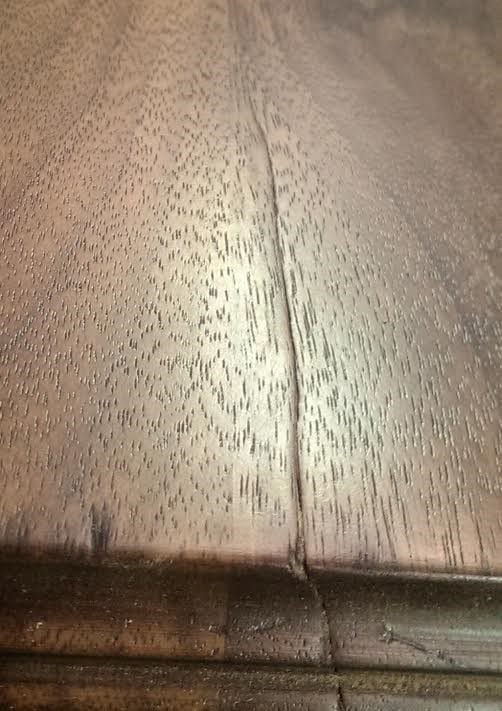
Pricing and turn-around times
Because wood prices fluctuate routinely and the length and thickness can impact the cost of the raw goods we price wood tops as requested, on an individual basis. By doing this, we can ensure our customers receive the best and most current pricing. It’s possible pricing may take several days so please be patient. For example, we may need to track down a particular species or length or thickness to accommodate your project. A general rule of thumb for pricing is to assume the cost of higher levels of granite and go up from there. This general rule on the cost allows us pre-qualify customers and discuss any budget constraints prior to pricing.
Once you place an order, you can expect the turn-around for installation to be approximately four weeks. There are times when certain raw materials have to be sourced, shipped, milled or dried. Planning ahead for wood tops is always a good idea.
Designer Surfaces One Year Installed Warranty
During the first year, our warranty covers glue joint separation, warping greater than 1/8” and peeling finish. Within this first year all charges and install fees will be covered if our workmanship is deemed to be substandard. This warranty does not cover uninstalled products.
Exclusions to this warranty:
Craftsmen with years of experience make all our products using the highest quality products available. We are proud to offer a design that guarantees a lifetime of use. Designer Surfaces Unlimited reserves the right to reject any claim and reserves the right to final decisions concerning warranty claims
- This warranty does not cover products installed in outdoor applications or in situations where the structure does not have access to a controllable climate.
- This warranty does not cover use for commercial applications.
- This warranty does not cover improper use or abuse. Improper use or abuse includes but is not limited to, damage from mishandling, damage from excessive heat or uneven exposure to weather conditions, physical or chemical abuse and damage from improper care and maintenance.
- This warranty does not cover scratches, cut marks, burns, gouges, discoloration or any condition caused by improper or unusual use.
- This warranty does not cover any chemical damage.
- This warranty does not cover any failures due to inadequate support for the installation.
- This warranty does not cover the altering of any factory applied finishes or support devices.
- This warranty does not cover staining or rough texture from improper use or lack of maintenance
- This warranty does not cover products that have not been paid in full.
- This warranty does not cover routine maintenance, cleaning and minor conditions such as stains, checking, shallow warping of 3/16” or less, and water spots that are a function of improper care and maintenance.
- This warranty does not cover products that live in homes without whole house humidifier units capable of maintaining 50% humidity levels year round.
Cancellation Policy for Custom Wood Countertops
Once you place an order, and the mandatory right of rescission has passed, DSU will place the lumber order for your project within one or two business days. Then, you may cancel the order within 7 days for a 50% refund. After seven business days, all cancellations are non-refundable. Should you cancel after this seven-day period you have 10 business days from the date of cancellation to pick up the materials or they will become the property of Designer Surfaces Unlimited. All cancellations must be accountable and in writing. It will be the canceling party’s responsibility to ensure the cancellation was received by Designer Surfaces Unlimited.



